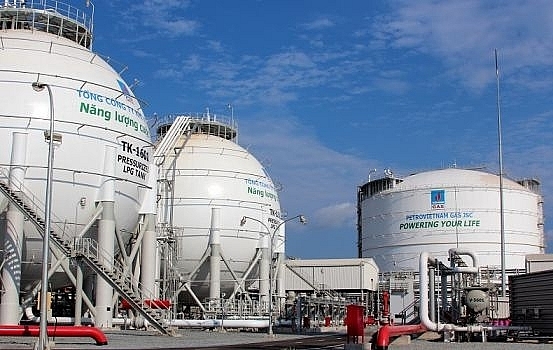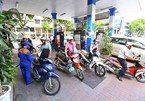 |
LNG is becoming a trend in Southeast Asia. Thailand was the first Southeast Asian country to import LNG fuel in 2011, reaching 3.95 million tonnes in 2017, up 30 per cent from the previous year.
Malaysia's LNG imports increased by 40 per cent to 1.8 million tonnes. Indonesia and the Philippines, which used to be LNG exporters, will begin importing from the early 2020s, according to Nikkei.
Nguyen The Huu, director of the Electricity Regulatory Authority of Vietnam (ERVAV) under the Ministry of Industry and Trade (MoIT), also stated at the Vietnam Wind Power 2019 conference that Vietnam might need to import LNG to meet its increasing energy demand in the near future.
Electricity demand in Vietnam has been increasing by about 10 per cent per year, putting great pressure on the electricity industry to ensure a stable supply for economic development and people’s living.
The proportion of electricity consumption by industries has increased. Before 2010, about 50 per cent of electricity consumption was for residential activities and 30 per cent for the industry.
However, at present, 50 per cent of the electricity output is reserved for industry and 30 per cent for residential use. This shows that electricity is majorly used for production and economic activities.
The proportion of hydropower in the previous years was a major part of the energy mix, but this proportion has not increased in recent years.
In Vietnam, according to Vu Dao Minh from the Oil and Gas Exploitation Department of Vietnam National Oil and Gas Group (PetroVietnam), the domestic gas output is about 10 billion cubic metres a year and this is expected to be maintained until 2020.
However, from 2020 onwards, existing gas reserves will decline, affecting the country's ability to ensure gas supply for consumers.
In addition to declining gas production, the development of new gas fields faces difficulties such as high levels of impurities (CO2, H2S), reserves at deep water locations, offshore, or at sensitive areas. These factors affect the cost of exploitation, collection, and processing, as well as affect the price of gas.
According to forecasts of imported LNG, the southeast region will start importing LNG from 2020, with an output of about 0.6 million tonnes and increasing by about 1 million tonnes when Nhon Trach 3 and 4 power plants go into operation.
After 2025, the demand for importing LNG will increase sharply to 5 million tonnes per year in 2025, 11 million tonnes in 2030, and 13.9 million tonnes in 2035.
The Northern region will also start to import LNG from 2025 onwards to supplygas for consumers in Thai Binh and neighbouring areas in the north.
According to Nikkei Asian Review, Vietnam National Petroleum Group (Petrolimex) revealed plans to build the first LNG import station with PetroVietnam to diversify energy sources as well as combat electricity shortages in Vietnam.
Currently, Petrolimex will focus on building an LNG storage station in Khanh Hoa province. Recipient facilities will sit next to a petroleum depot. LNG will be supplied to a gas-powered power plant built nearby by Electricity of Vietnam (EVN).
The plant is expected to begin operation in the late 2020s and will provide about 6,000MW of energy. However, the total investment, including storage and power plants, will cost about $3.6 billion. VIR
Tan Duong

Petrolimex plans LNG project in Khanh Hoa province
The Vietnam National Petroleum Group (Petrolimex) is planning to invest in a liquefied natural gas (LNG) project in the south central province of Khanh Hoa.

Petrolimex plans convenience stores at gas stations
The Vietnam National Petroleum Group (Petrolimex) is planning to open convenience stores at its gas stations across the country.

VN oil and gas industry expands domestic market
The oil and gas industry is boosting the production of petrol and fibre products to meet domestic demand in addition to developing sectors in which it holdsadvantages.
 Vietnam's gas supply is forecast to fall short of demand between 2017 and 2035, therefore, which makes it necessary to develop new gas sources, build infrastructure to develop marginal gas fields or even import liquefied natural gas (LNG).
Vietnam's gas supply is forecast to fall short of demand between 2017 and 2035, therefore, which makes it necessary to develop new gas sources, build infrastructure to develop marginal gas fields or even import liquefied natural gas (LNG).